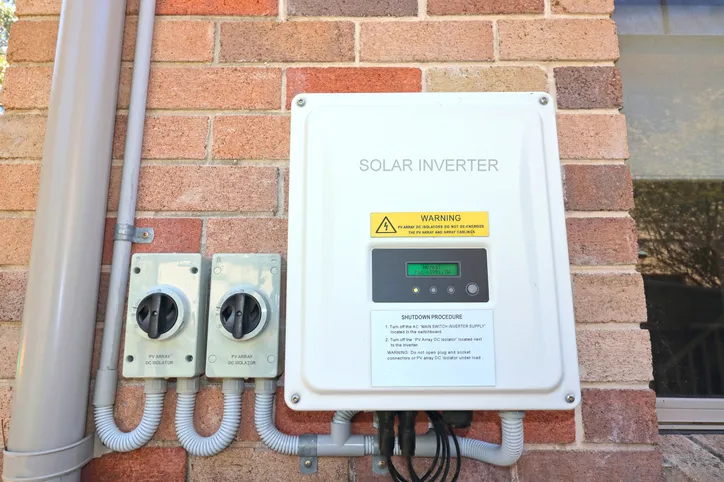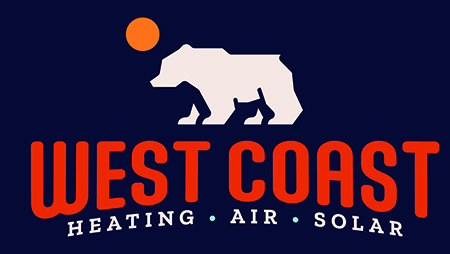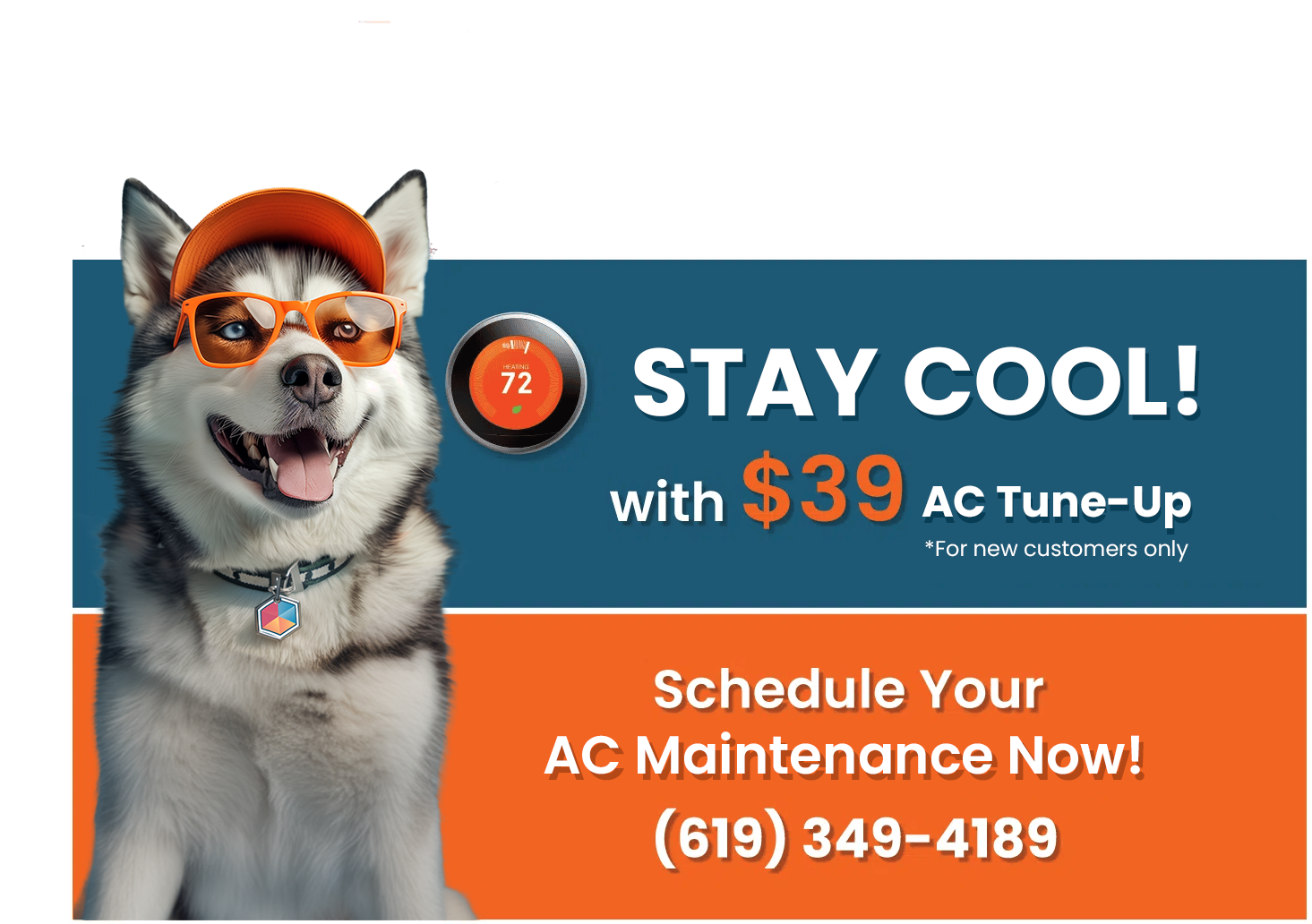Solar Inverter Services in Escondido
Breathe easy, knowing our air quality services are designed to foster a healthier and safer living environment in your home. Trust us to help you breathe better, one service at a time.
Expert Solar Inverter Services in Escondido
Your solar panels harness sunlight, but it’s your solar inverter that makes that energy usable in your home. This crucial component converts the raw DC (direct current) power generated by your panels into AC (alternating current) power that your appliances, lights, and the utility grid use. Without a properly functioning inverter, your solar system simply cannot power your home.
At West Coast Heating, Air Conditioning, and Solar, we understand the vital role your solar inverter plays in maximizing your energy production and savings. We provide expert solar inverter installation, repair, and replacement services right here in Escondido and across San Diego County.

Understanding the Heart of Your Solar System
Think of the solar inverter as the “brain” of your solar energy system. While panels capture light, the inverter is responsible for safely and efficiently transforming that energy into electricity you can consume. Its performance directly impacts how much usable power your system generates and how effectively it integrates with your home’s electrical system and the utility grid.
A failing or outdated inverter can significantly reduce your solar system’s output, leading to higher electricity bills and diminished return on your investment. Ensuring your inverter is correctly installed, maintained, and repaired by qualified professionals is essential for optimal performance.
Types of Solar Inverters: Finding the Right Fit
Not all solar systems are the same, and neither are all inverters. The best type for your home depends on factors like your roof layout, potential shading issues, system size, and monitoring preferences. Here are the primary types you’ll encounter:
String Inverters: This is the most common type. Solar panels are wired together in “strings,” and one central inverter converts the DC power from the entire string into AC power.
- Pros: Generally the most cost-effective option upfront. Easier troubleshooting as there’s one central unit.
- Cons: Performance is limited by the weakest panel in the string (e.g., if one panel is shaded, the output of the entire string is reduced). Less detailed panel-level monitoring.
- Best Use Case: Roofs with uniform sun exposure, minimal shading, and simple layouts.
Microinverters: Instead of a single central inverter, microinverters are installed on each individual solar panel. They convert DC to AC power at the panel level.
- Pros: Maximize energy harvest because each panel operates independently (shading on one panel doesn’t affect others). Enable panel-level monitoring. Longer lifespan compared to string inverters.
- Cons: Higher upfront cost due to multiple units. Installation can be slightly more complex.
- Best Use Case: Roofs with complex layouts, varying orientations, or potential shading issues.
Power Optimizers: These combine aspects of both string and microinverters. Optimizers are installed on each panel (or pair of panels) to condition the DC power and optimize its voltage before sending it to a central string inverter for the final DC to AC conversion.
- Pros: Mitigate shading effects like microinverters, improving panel-level performance. Allow for panel-level monitoring. Can be more cost-effective than microinverters for certain systems.
- Cons: Requires both optimizers and a central inverter. Slightly more complex system than a simple string inverter setup.
- Best Use Case: Similar to microinverters, ideal for roofs with shading or complex sections, offering a balance of performance optimization and cost.
Choosing the correct inverter type for your specific Escondido property is critical for maximizing your solar investment. Our experts can assess your needs and recommend the optimal solution.
Common Solar Inverter Problems and What to Look For
Like any electronic equipment exposed to the elements, solar inverters can experience issues over time. Being aware of potential problems can help you address them quickly and minimize system downtime. Common signs of inverter problems include:
- No Power Production: Your monitoring system (if you have one) shows zero energy being produced, even during sunny hours.
- Reduced Output: Production is consistently lower than expected compared to previous performance or similar systems, especially without obvious reasons like heavy cloud cover.
- Error Codes or Warning Lights: The inverter’s display shows specific error codes, or indicator lights are on that suggest a fault (refer to your inverter manual).
- Unusual Noises: Buzzing, humming, or other strange sounds coming from the unit.
- System Shutting Down Frequently: The inverter turns off unexpectedly.
If you suspect an issue with your inverter, it’s best to call a professional. While checking your main solar breaker might be a safe initial step (if you know how and where it is located), attempting to open or service the inverter yourself can be dangerous and may void warranties.
Solar Inverter Lifespan: Repair or Replace?
The lifespan of a solar inverter varies depending on its type, quality, installation environment, and maintenance.
- String Inverters: Typically last 10-15 years.
- Microinverters and Power Optimizers: Often have longer warranties and expected lifespans, frequently ranging from 20-25 years, aligning more closely with the solar panels themselves.
Factors like extreme temperatures, humidity, voltage fluctuations, and improper ventilation can shorten an inverter’s life.
When an inverter malfunctions, the decision between repairing or replacing it depends on several factors:
- Age: If your inverter is nearing the end of its typical lifespan (especially older string inverters), replacement is often more cost-effective in the long run.
- Cost of Repair: Major component failures might make repair costs approach or exceed the cost of a new, more efficient unit.
- Warranty: Check if your inverter is still under warranty. This can significantly reduce repair or replacement costs.
- Availability of Parts: For older models, finding replacement parts might be difficult or impossible.
- Technological Advancements: Newer inverters often offer higher efficiency, better monitoring capabilities, and improved reliability. Replacing an old inverter can upgrade your system’s performance.
Our experienced technicians can diagnose the issue, provide a clear assessment of the repair options vs. replacement costs, and help you make the best decision for your system and budget in Escondido.
Professional Solar Inverter Services in Escondido
West Coast Heating, Air Conditioning, and Solar offers comprehensive services for all your solar inverter needs in Escondido:
- Solar Inverter Installation: Whether you’re installing a new solar system or upgrading an existing one, we ensure your inverter is sized correctly and installed according to the highest safety and performance standards.
- Solar Inverter Repair: Our skilled technicians can diagnose and repair a wide range of inverter issues for various brands and types, restoring your system’s production.
- Solar Inverter Replacement: If your inverter is beyond repair, outdated, or you’re looking to upgrade, we can expertly replace it with a new, efficient model that’s right for your system.
- Solar Inverter Maintenance: As part of regular solar system checks, we inspect your inverter for optimal operation, identify potential issues early, and ensure connections are secure.
We have experience with many leading inverter brands, including those commonly found in the San Diego and Escondido area.
Why Choose West Coast Heating, AC & Solar for Your Escondido Inverter Needs?
Choosing the right local solar company is crucial. For residents in Escondido and surrounding communities, West Coast Heating, Air Conditioning, and Solar offers:
- Local Expertise: We’ve been serving San Diego County since 1996, understanding the specific climate challenges and energy needs of the area.
- Qualified Professionals: Our technicians are highly trained and experienced in working with various solar technologies, including the latest inverter systems.
- Comprehensive Service: We handle the entire process, from diagnosis and troubleshooting to repair, replacement, and installation.
- Customer Satisfaction: Our commitment to quality and transparent service has earned us the trust of homeowners across the county, reflected in numerous positive reviews.
- Warranty Assistance: We can help navigate inverter warranties to ensure you receive eligible coverage for repairs or replacements.
Don’t let a faulty inverter diminish your solar savings. Trust the local experts who care about your comfort and energy independence.
Frequently Asked Questions About Solar Inverters
What does a solar inverter do?
A solar inverter converts the direct current (DC) electricity generated by your solar panels into usable alternating current (AC) electricity for your home and the utility grid.
How long do solar inverters last?
String inverters typically last 10-15 years, while microinverters and power optimizers often last 20-25 years. Lifespan can vary based on type, quality, and environmental factors.
Can a solar inverter be repaired?
Yes, many solar inverter issues can be repaired, especially if the unit is relatively new or the problem is minor. However, for older inverters or major failures, replacement might be more cost-effective.
What should I do if my solar inverter is not working?
Check your monitoring system for error codes. If safe, you can visually inspect the unit for obvious signs of damage (but do not open it). It’s best to contact a professional solar technician in Escondido to diagnose the problem safely and accurately.
What are the best solar inverter brands?
Several reputable brands manufacture high-quality inverters, including Enphase (known for microinverters), SolarEdge (known for power optimizers), and SMA (a leading manufacturer of string inverters). The “best” depends on your system’s specific needs.
Does shading affect inverter performance?
Yes, shading significantly impacts string inverters as it affects the entire string. Microinverters and power optimizers are better equipped to handle shading by optimizing performance at the individual panel level.
Ready to Ensure Your Solar System Performs Optimally?
If you’re in Escondido and need professional solar inverter services – whether it’s installation, repair, or replacement – trust the experienced team at West Coast Heating, Air Conditioning, and Solar. We’re here to help you keep your solar system running efficiently.
Schedule Now or call us today at (619) 349-4189 to request service or a consultation.

